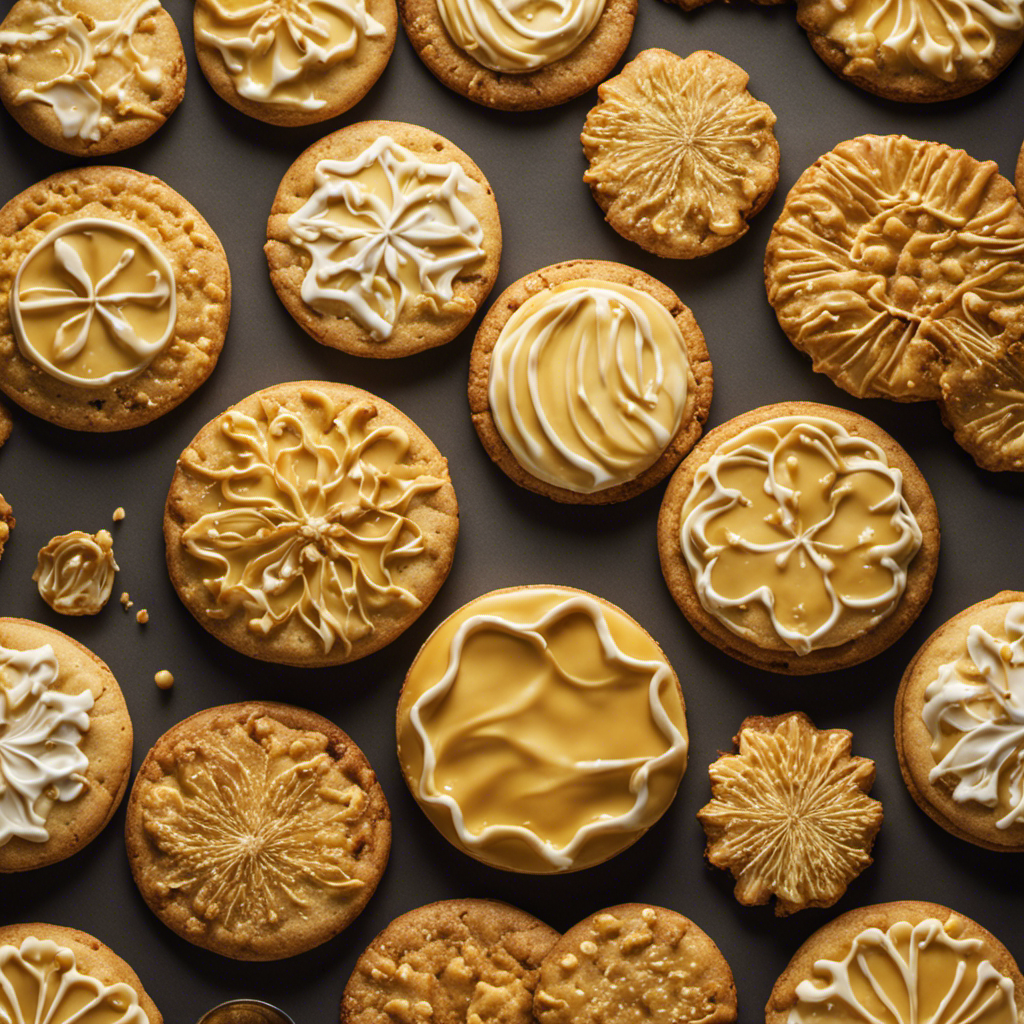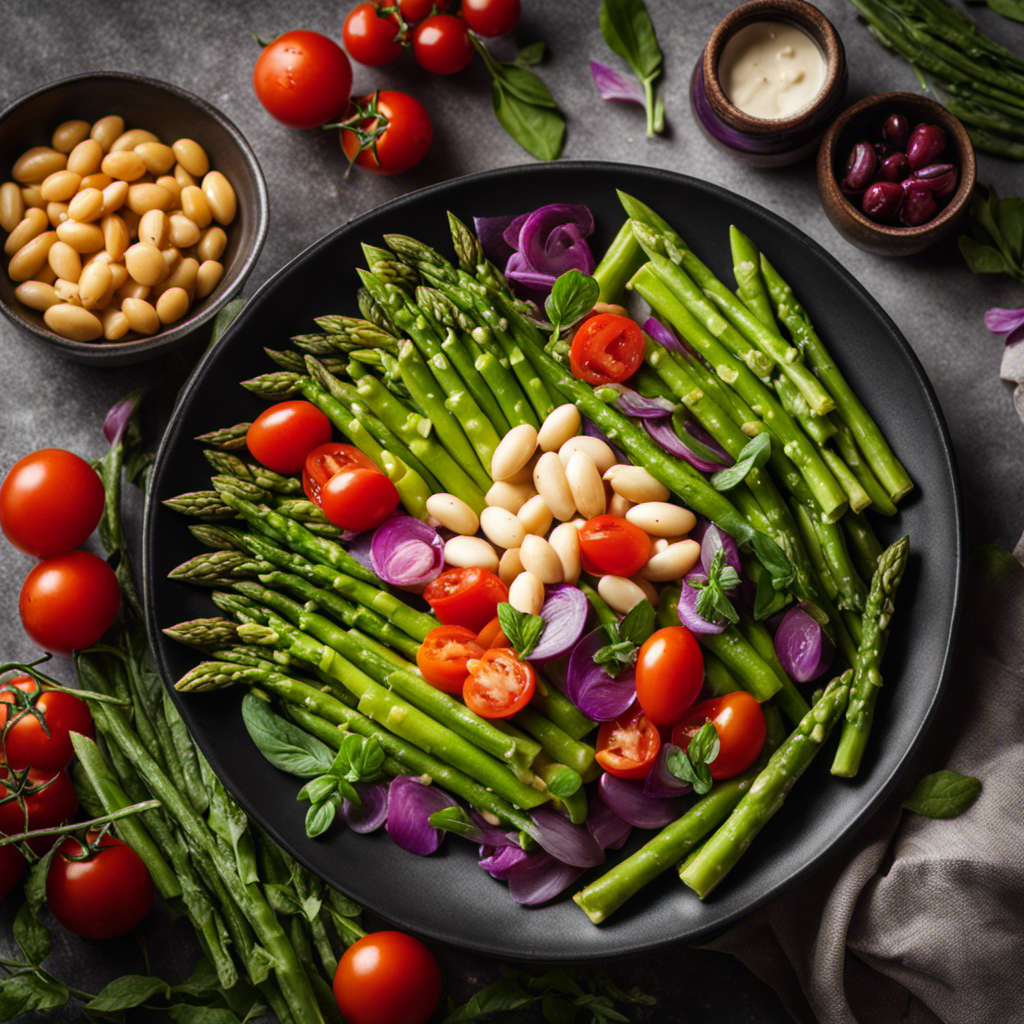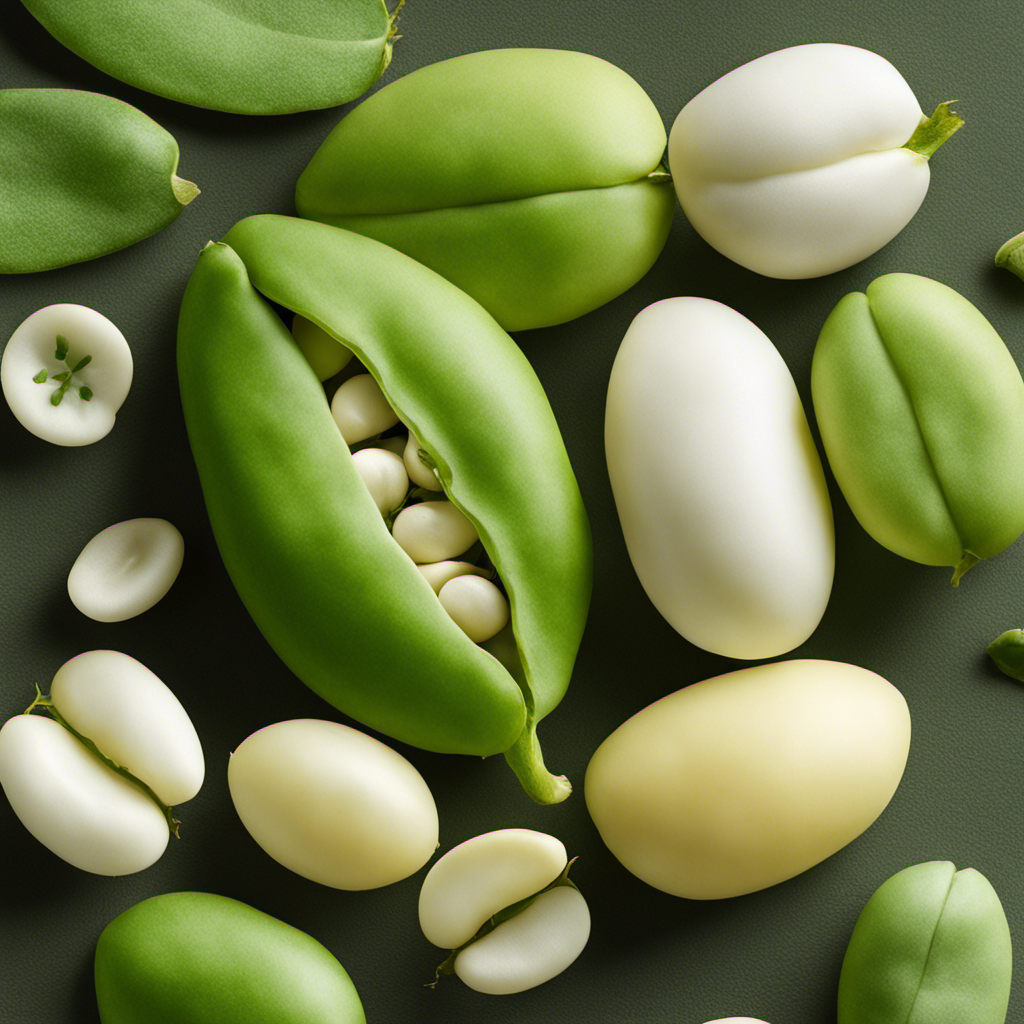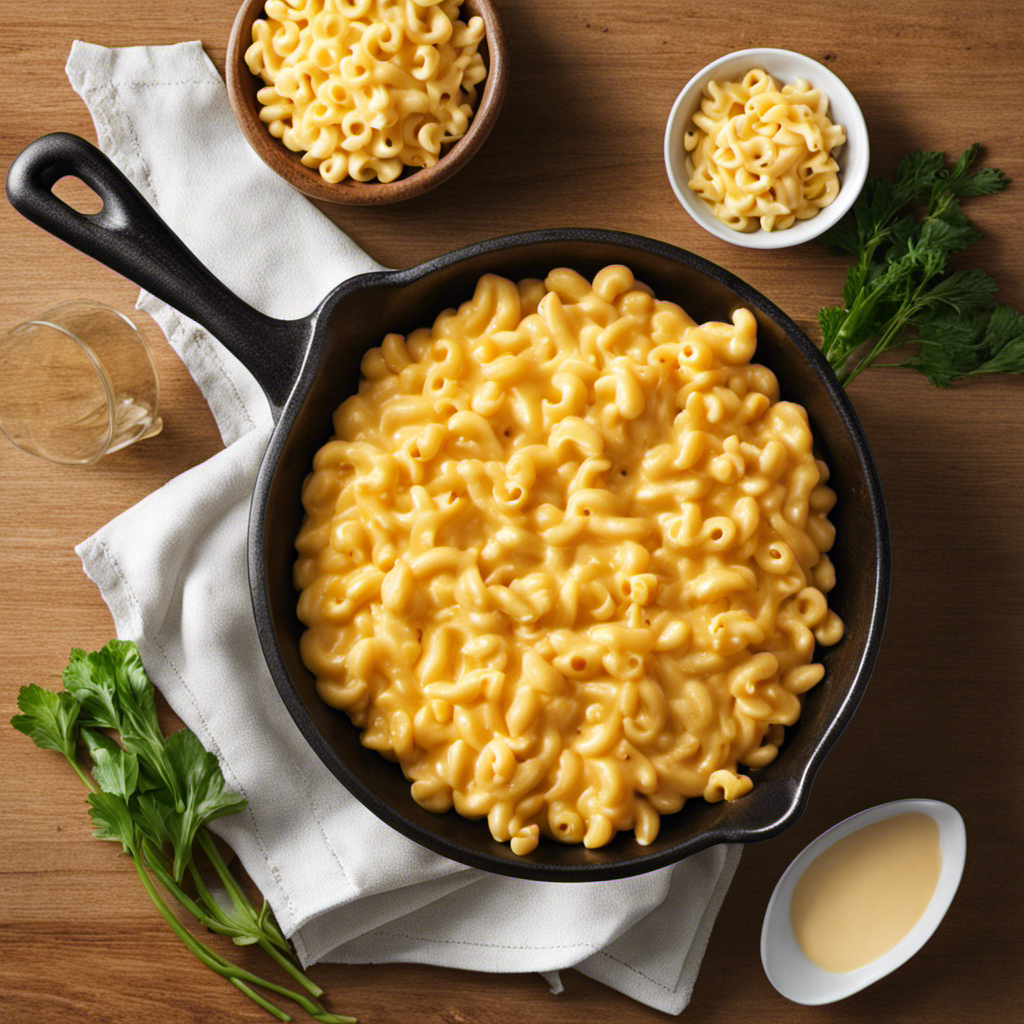While I was placing the dough on the baking sheet, I couldn’t help but ponder what would occur if I included some extra butter in my cookies. Would they become even softer and more deliciously melting in the mouth? Or would the surplus fat spoil the texture and result in them spreading too thinly?
In this article, we will explore the effects of adding too much butter to cookie dough, examining how it impacts texture, shape, spread, flavor, and even baking time.
Key Takeaways
- Excess butter makes cookies softer, more crumbly, and greasy.
- Too much butter alters the taste profile, overpowering richness.
- Adjusting butter in recipes affects baking time.
- Excessive butter leads to over-saturated dough, affecting shape during baking.
The Impact on Texture
I can definitely feel a noticeable difference in the texture of the cookies when I put too much butter in them.
The excess butter leads to changes in consistency, making the cookies softer and more crumbly. The dough becomes greasy and doesn’t hold its shape well during baking.
As a result, the cookies spread out more on the baking sheet, resulting in thinner and flatter cookies. The increased amount of butter also affects the browning process. The excess fat causes the cookies to brown more quickly and unevenly, leading to a darker color and potentially a burnt taste.
The texture of the cookies becomes less desirable, as they lack the desired crispness and tenderness.
It’s important to carefully measure and incorporate the correct amount of butter to maintain the desired texture and appearance of the cookies.
The Effect on Shape and Spread
Adding excessive butter to cookies will cause them to spread excessively and lose their intended shape. It’s important to understand the impact of butter substitution and the ability to adjust the butter content in cookie recipes.
When substituting butter with other ingredients, such as margarine or oil, one must consider the different fat content and melting points. Margarine, for example, has a higher water content than butter, which can result in cookies spreading more during baking. To avoid this, adjusting the butter content by reducing it slightly can help maintain the desired shape and texture.
Experimenting with different ratios of butter to other fats can also help achieve the desired results. The key is to find the right balance that will provide the desired spread without sacrificing the overall structure of the cookies.
The Consequences for Flavor
Reducing the butter content in cookie recipes can help maintain the desired shape and texture without compromising the flavor. When too much butter is used, the overpowering richness can overwhelm the taste buds, altering the taste profile of the cookie. This alteration of the taste profile can be undesirable for those who prefer a more balanced flavor.
Additionally, an excessive amount of butter can lead to a greasy texture, making the cookie feel heavy and dense. By reducing the butter content, the cookie can still have a delicious, buttery flavor, but without the overpowering richness that can be off-putting.
This allows for a more enjoyable eating experience, where the flavors are harmoniously blended together.
The Influence on Baking Time
Baking time can be affected by adjusting the amount of butter in cookie recipes. When it comes to butter substitution, it’s important to choose alternatives that have similar fat content and moisture levels. Butter plays a crucial role in the texture and structure of cookies, so changing the amount can lead to variations in baking time.
If you use too much butter, cookies can spread excessively and take longer to bake, resulting in a greasy and less desirable texture. On the other hand, reducing the amount of butter can cause cookies to be drier and bake faster. It’s important to find the right balance to achieve the desired outcome.
However, it’s worth noting that using less butter could increase the risk of burning, as the cookies will have less moisture to help regulate temperature and prevent over-browning.
The Potential for Burning
I need to be cautious about the potential for burning when adjusting the amount of butter in my cookie recipes. While butter is a key ingredient that adds flavor and moisture to cookies, too much of it can have negative consequences.
Here are a few things to keep in mind:
-
Over saturation: Adding excessive butter can lead to an over-saturated dough, making it difficult for the cookies to hold their shape during baking.
-
Impact on overall moisture: Butter contains water, and adding too much of it can increase the moisture content in the dough. This can result in cookies that spread too much and become overly soft or even greasy.
-
Increased risk of burning: Butter has a lower smoke point compared to other fats, such as vegetable oil. When cookies with excess butter are baked at high temperatures, they’re more likely to burn quickly.
To avoid these issues, it’s important to follow the recipe’s instructions carefully and make adjustments to the butter quantity gradually, keeping in mind the potential for over saturation and its impact on overall moisture.
Frequently Asked Questions
Can I Substitute Butter With a Different Type of Fat in Cookie Recipes?
Yes, you can substitute butter with a different type of fat in cookie recipes. However, it’s important to consider the pros and cons. Healthier alternatives to butter in cookies include coconut oil and avocado.
How Does Using Margarine Instead of Butter Affect the Texture of Cookies?
Using margarine in cookies has its pros and cons. It can change the texture, making them softer and spread more. But using vegetable oil instead of butter can result in a greasier and less flavorful cookie.
Will Using Salted Butter Instead of Unsalted Butter Affect the Taste of Cookies?
Using salted butter instead of unsalted butter will result in a slightly saltier taste in cookies. The difference lies in the added salt content of salted butter, which can affect the overall flavor profile of the baked goods.
How Does Using Clarified Butter Instead of Regular Butter Affect the Spread of Cookies?
Using ghee instead of clarified butter affects cookie spread. The fat ratio plays a crucial role in determining how much the cookies spread while baking. It’s important to find the right balance for perfect cookies.
Can I Reduce the Amount of Butter in a Recipe Without Compromising the Flavor and Texture of the Cookies?
Reducing the butter amount in cookies can affect their flavor and texture. However, there are alternative fats like coconut oil or applesauce that can be used to maintain the desired taste and consistency.
Conclusion
In conclusion, adding too much butter to cookies can have a significant impact on their texture, shape, spread, flavor, and baking time. It’s like trying to fit a square peg in a round hole – the results are unpredictable and often not desirable.
It’s important to follow the recipe’s instructions carefully to ensure the perfect balance of ingredients for delicious and well-formed cookies. Remember, too much of a good thing can sometimes lead to less-than-ideal outcomes in the kitchen.










